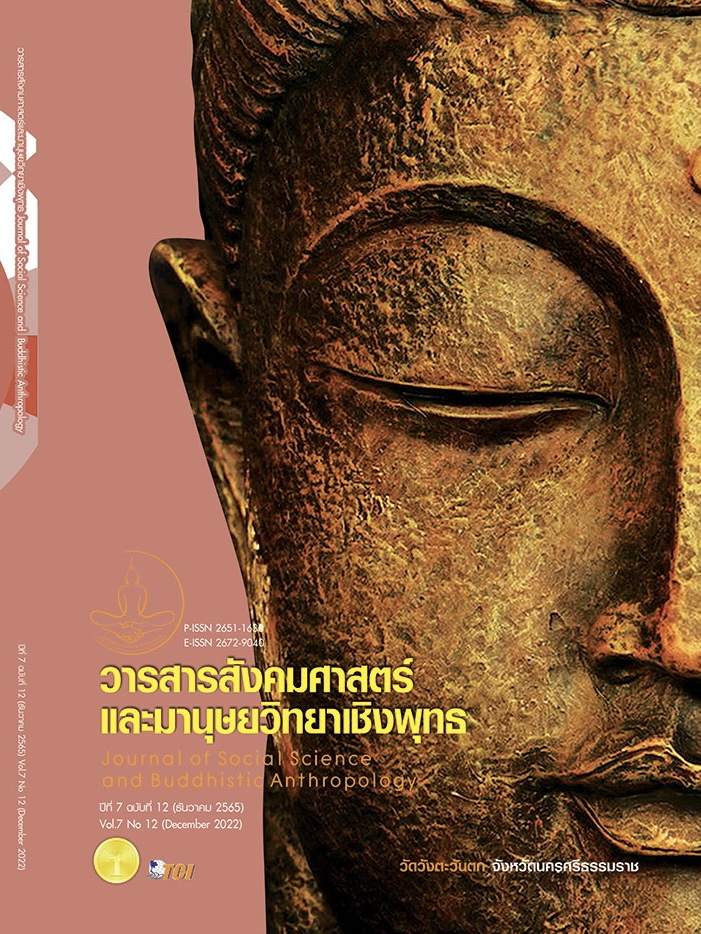AN EVALUATION OF MORAL SCHOOL PROJECT IN MAEYAOWITTAYA SCHOOL THE CHIANGRAI PRIMARY EDUCATIONAL SERVICE AREA OFFICE 1
Keywords:
Project Evaluation, Moral School, The Evaluation Model 360 DegreeAbstract
This research article aims to evaluation of moral school project in Maeyaowittaya school in chiangrai province under the chiangrai primary educational service area office 1 by the 360 Degree evaluation model in 3 areas 1) input 2) process and 3) outcome. The sample are 23 school administrators and teachers, 13 basic education committee, 100 parents of primary 4 - 6 and secondary 1 - 3 students, 300 primary 4-6 and secondary 1 - 3 students total 436 people selected by purposive sampling. 7 data collection tools. Statistics used in data analysis with percentage, mean, standard deviation. The results showed that: 1) The Evaluation results of input in overall was at the highest level ( = 4.62, S.D. = 0.47). 2) The Evaluation results of process in overall was at the highest level (
= 4.69, S.D. = 0.45). 3) The Evaluation results of outcomes 3.1) The desired outcomes passed the school assessment criteria in office of the basic education commission (OBEC) moral school of the evaluation committee from the chiangrai primary educational service area office 1. The result of the school is Moral identities in schools consist of discipline, self-sufficiency, and volunteerism. which the effect on the learners Effects on teachers and school personnel including the results for school administrators with morality. Have a moral goal higher than the target set at 80 percent. Overall 85.00-92.00 percent. 3.2) The results of the satisfaction assessment of those involved were students, school administrators, teachers, parents of students. and the Board of Basic Education Institutions in overall was at the highest level (
= 4.77, S.D. = 0.40).
References
เกรียงศักดิ์ เจริญวงศ์ศักดิ์. (2554). การเสริมสร้างคุณธรรมจริยธรรม. กรุงเทพมหานคร: มหาวิทยาลัยรามคำแหง.
นิศากร ยมหา. (2559). รายงานการประเมินผลโครงการพัฒนาคุณธรรมจริยธรรมนักเรียน โรงเรียนมกุฎเมืองราชวิทยาลัย. ระยอง: โรงเรียนมกุฎเมืองราชวิทยาลัย.
บุญตา แซ่เล็ก. (2558). การประเมินโครงการห้องเรียนเทคโนโลยีตามความร่วมมือระหว่างมหาวิทยาลัยมหาสารคามกับโรงเรียนท่าขอนยางพิทยาคมโดยใช้รูปแบบการประเมิน 360 องศา. ใน วิทยานิพนธ์การศึกษามหา
บัณฑิต สาขาวิชาหลักสูตรและการสอน. มหาวิทยาลัยมหาสารคาม.
พรพิทักษ์ เห็มบาสัตย์ และวรรณพล พิมพะสาลี. (2563). แนวทางการปลูกฝังคุณธรรมจริยธรรมในสังคมไทย. วารสารด้านการบริหารรัฐกิจและการเมือง, 9(2), 63-80.
ไพจิตร์ จิตต์โสภณ. (2561). รายงานการประเมินโครงการส่งเสริมคุณธรรม จริยธรรมนักเรียน ตามแนวการดำเนินงานโรงเรียนคุณธรรม โรงเรียนวัดเจริญราษฎร์. สงขลา: โรงเรียนวัดเจริญราษฎร์.
วินัย ป้อมคำ. (2561). รูปแบบการบริหารจัดการสถานศึกษาแบบ 360 องศา สังกัดสำนักงานเขตพื้นที่การศึกษาประถมศึกษาลพบุรี เขต 2. ใน รายงานการวิจัย. สำนักงานคณะกรรมการการศึกษาขั้นพื้นฐาน กระทรวงศึกษาธิการ.
สำนักงานคณะกรรมการการศึกษาขั้นพื้นฐาน. (2559). แนวทางการขับเคลื่อนโครงการโรงเรียน คุณธรรม สพฐ.ประจำปีงบประมาณ พ.ศ. 2560. กรุงเทพมหานคร: สำนักพัฒนานวัตกรรมการจัดการศึกษา.
เสาวรส ยิ่งวรรณะ. (2562). รูปแบบการประเมินจิตสำนึกรักษ์น้ำตามแนวคิดการประเมิน 360 องศา. วารสารการศึกษาและการพัฒนาสังคม, 13(2), 238-249.
อำนาท เหลือน้อย. (2561). รูปแบบการบริหารจัดการชุมชนแห่งการเรียนรู้ทางวิชาชีพของโรงเรียน มาตรฐานสากล. ใน ดุษฎีนิพนธ์ครุศาสตรดุษฎีบัณฑิต สาขาการบริหารการศึกษา. มหาวิทยาลัยราชภัฏนครสวรรค์.
Antonioni, D. (1996). Designing an effective 360-degree appraisal feedback process. Organizational Dynamics, 25(4), 24-38.
Edwards, M. R. (1996). 360 degree feedback: The powerful new model for employee assessment & performance improvement. New York: American Management Associate.
Downloads
Published
How to Cite
Issue
Section
License
Copyright (c) 2022 Journal of Social Science and Buddhistic Anthropology

This work is licensed under a Creative Commons Attribution-NonCommercial-NoDerivatives 4.0 International License.








